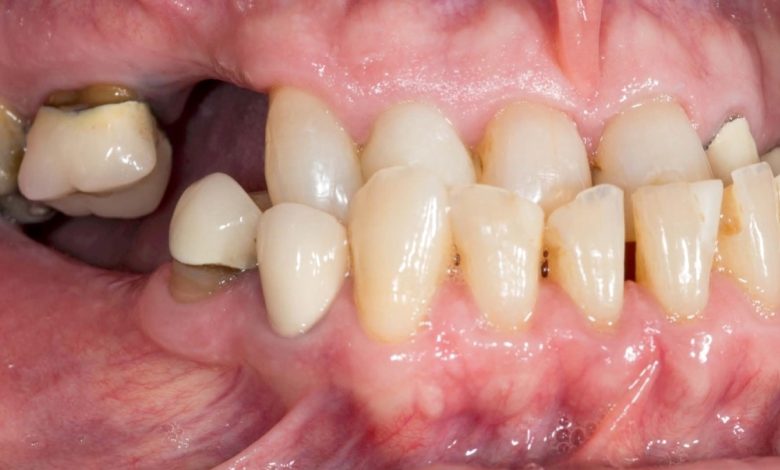Correcting Cross Bites: Strategies for Improved Dental Alignment

A beautiful smile is not just about straight teeth; it’s also about proper alignment. However, some individuals may experience orthodontic issues such as cross bites, which can affect both the aesthetics and functionality of their smile. cross bite occur when the upper and lower teeth do not align properly, causing some of the upper teeth to sit inside or outside the lower teeth when the jaws are closed. In this comprehensive guide, we’ll delve into the intricacies of cross bites, exploring their causes, symptoms, and various treatment options to achieve optimal dental alignment and improve overall oral health.
Understanding Cross Bites
A cross bite is a type of malocclusion, or misalignment of the teeth, where the upper teeth do not properly align with the lower teeth when the jaws are closed. This misalignment can occur in different ways.This occurs when the upper front teeth sit behind the lower front teeth when the jaws are closed.In this case, the upper back teeth are positioned inside the lower back teeth when biting down.Cross bites can affect one or more teeth and may involve either a single tooth or multiple teeth on one or both sides of the mouth. If left untreated, cross bites can lead to various dental problems, including tooth wear, jaw pain, and temporomandibular joint (TMJ) disorders.
Causes of Cross Bites
Several factors can contribute to the development of cross bites, including.Cross bites can be hereditary, with certain jaw and teeth alignment characteristics passed down from parents to their children.Irregular growth of the upper or lower jaw can lead to cross bites, causing the teeth to misalign when biting down.Prolonged thumb sucking or pacifier use beyond infancy can alter the alignment of the teeth and jaws, potentially leading to cross bites.Premature loss of baby teeth without adequate replacement by permanent teeth can disrupt the natural alignment of the teeth, contributing to cross bites.
Symptoms of Cross Bites
Identifying the signs and symptoms of cross bites is essential for prompt diagnosis and treatment. Common indicators of cross bites may include.Uneven alignment of the upper and lower teeth when smiling or biting down is a typical sign of cross bites.Individuals with cross bites may experience discomfort or difficulty when chewing food due to the misalignment of the teeth.Cross bites can place strain on the jaw joints, leading to pain, stiffness, or discomfort in the jaw area.Uneven wear patterns on the teeth, particularly on the biting surfaces, may indicate the presence of a cross bite.Some individuals with cross bites may experience speech difficulties, such as lisping or difficulty pronouncing certain sounds, due to the misalignment of the teeth.
Treatment Options for Cross Bites
Fortunately, cross bites can be effectively treated with various orthodontic interventions aimed at correcting the misalignment of the teeth and jaws. The most suitable treatment approach will depend on the severity of the cross bite, the age of the patient, and other individual factors. Common treatment options for cross bites include:Traditional braces, consisting of brackets and wires, can be used to gradually realign the teeth and correct cross bites. Braces apply controlled forces to move the teeth into their proper positions over time, resulting in improved alignment and bite function.Clear aligner therapy offers a discreet alternative to traditional braces for correcting mild to moderate cross bites. Custom-made aligners are worn over the teeth and changed every few weeks to gradually shift the teeth into alignment.In cases where the cross bite is caused by a narrow upper jaw, a palatal expander may be recommended. This orthodontic appliance is attached to the upper molars and applies gentle pressure to widen the palate, creating additional space for the teeth to align properly.
Importance of Early Intervention
Early detection and intervention are crucial for effectively addressing cross bites and preventing potential complications. Orthodontic evaluation should ideally begin during childhood, as early intervention can help guide jaw growth and tooth development, minimizing the need for extensive treatment later in life.
Conclusion
Cross bites are a common orthodontic issue that can affect both the appearance and functionality of the smile. Fortunately, with the advancements in orthodontic technology and treatment modalities, individuals with cross bites have access to a variety of effective treatment options. By understanding the causes, symptoms, and available treatment strategies for cross bites, individuals can take proactive steps towards achieving optimal dental alignment and improving their overall oral health. If you suspect you or your child may have a cross bite, schedule a consultation with an orthodontic specialist to explore the best course of action and embark on the journey towards a straighter, healthier smile.









